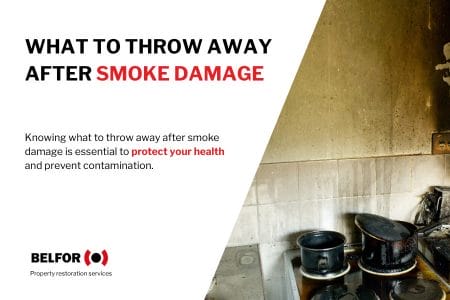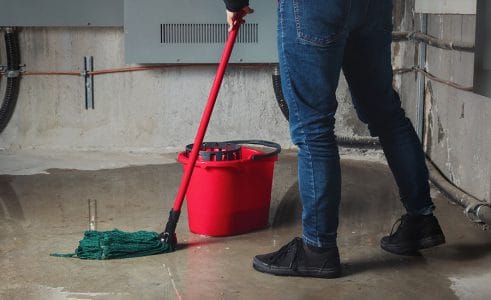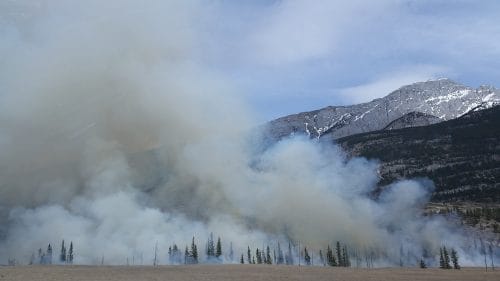How To Prepare for a Wildfire
Wildfires pose a significant risk to life and property. To protect yourself and your family from these disasters, you’ll need to prepare.
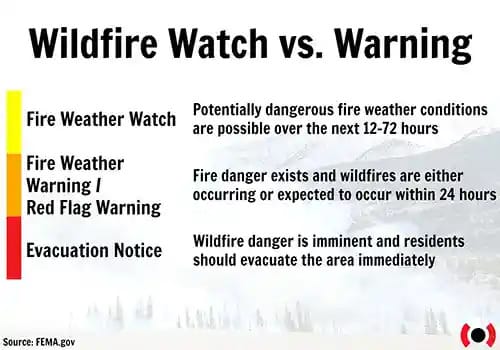
Step 1: Be Aware
It’s important to be knowledgeable of preventive measures and the proper actions to take during a wildfire so you can save lives and your property.
What is a wildfire? The term wildfire refers to a large, unplanned blaze in a rural or forested area. These fires spread at an alarming rate due to the high volumes of combustible vegetation found in their path.
What causes wildfires? Some of the most common causes of wildfire include lightning, arson, discarded cigarettes, and spontaneous combustion.
When is wildfire season? Wildfires are most prevalent in the summer and fall. At these times, vegetation is driest, making it easier for fires to spread.
Geography plays a major role in where wildfires occur. For example, areas with plenty of land and vegetation, and a drier climate are more prone to danger, as they provide favorable conditions for fires to spread rapidly.
In addition, listen to your local news, sign up for your community warning system and keep up to date with the Emergency Alert System (EAS) to know when you are in danger and need to evacuate.
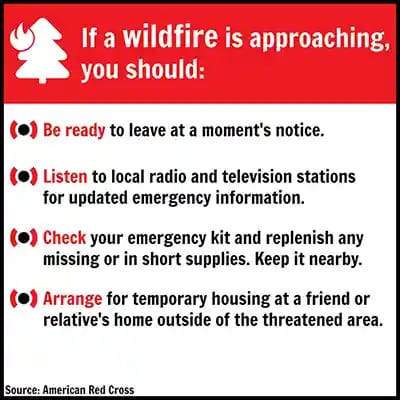
Step 2: Be Prepared
Have clear procedures, plans, and protocol in place with your family and neighbors in the event of a fire, as it ensures coordinated responses and enhances safety measures for everyone involved.
Insurance: Talk to your insurance company if you are in an at-risk area. Check if your policy covers damage from wildfire, and if it does not, invest in a policy that does.
Plans: Have an evacuation plan in place for you, your family, and any pets or livestock. With wildfires, it is important to prepare multiple evacuation routes as the spread of fire can be unpredictable.
Your plan should include:
Contact information for:
Family members
Workplaces
Schools
Doctors
Utility companies
Medical care providers
Any other relevant contact details (such as family friends)
Important documents:
Birth certificates
Social security cards
Insurance policies
Photos of your property (for insurance purposes)
Details of destination:
Addresses of people you can stay with
Location of local disaster center
Hotels you may be able to stay at in case long-distance evacuation is necessary
Maps marked with at least two evacuation routes
Contact information of people with access to these properties
In addition, examine the building materials used in local neighborhoods and check for nearby factories or farms.
Factories might store large quantities of hazardous materials, and farms often have significant amounts of fertilizers and other chemicals.
Be aware of these hazards and consider them when planning your evacuation route.
Step 3: Pack an Evacuation Kit
If you need to leave your home quickly, be ready to evacuate at a moment’s notice. Pack bags and store them in an easily accessible spot. As a fire approaches, consider placing these bags in your car to ensure a swift departure in an emergency.
Your evacuation kit should include:
- N95 masks – N95 masks are respirators that fit closely to your face and will filter out airborne particles that may be harmful to you.
- Three days’ supply of clean, bottled water
- Three days’ supply of dry or long-life food supplies
- Blankets
- Changes of clothes
- Your evacuation/wildfire plan
- A portable radio
- Flashlights
- Mobile phone
- First aid kit
- Medications
- Any pet supplies and carriers
Step 4: Protect Your Home
First, clear the area around your home of any debris that could fuel a fire, including wooden furniture, tree branches, and vegetation on the ground. This is known as creating a “defensible space” around your home.
Next, make sure you have identified an emergency water supply close to your home, such as a swimming pool, pond, cistern, or well. Doing this can help prevent a fire from reaching your home.
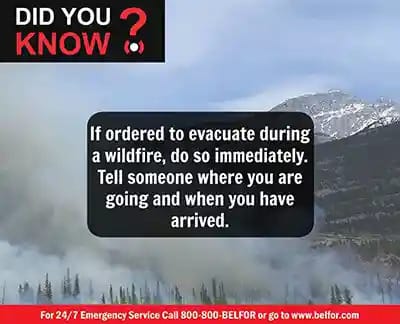
Step 5: Know the Dangers
Fire: The most obvious danger of wildfires is the flames themselves. If you have been told by your EAS that there is a wildfire in your area and it may affect your property, you should evacuate.
If this isn’t possible or the fire is spreading too fast for you to leave before it reaches your property, move away from the open flames.
Then, protect your face to reduce smoke inhalation. If you don’t have a mask, use a damp cloth. Stay low to avoid the denser smoke as you move. Head away from the fire and, if possible, move against the wind, as this is likely the opposite direction of the fire’s advance.
If you must pass within a few meters of the fire, avoid walking on embers and consider dampening clothes to prevent flames from catching.
Smoke: Inhaling smoke of any kind is dangerous, and with the wide range of combustibles that wildfires burn, the smoke resulting from these materials can cause serious harm.
Smoke from a wildfire can spread over large distances so you may be at risk before flames reach your area. Keep checking your EAS and local news for updates on when smoke may encroach on your home.
Even if a wildfire isn’t expected to reach your area and there’s no evacuation order, smoke can still compromise your air quality.
Smoke contains carbon monoxide and toxic particles that can irritate your eyes, nose, and throat, leading to nausea, light-headedness, and chest pain. In severe cases, it can cause suffocation.
Prolonged exposure may also damage your lungs. To limit smoke inhalation, stay indoors with doors and windows closed, and wear N95 masks to filter out harmful particles.
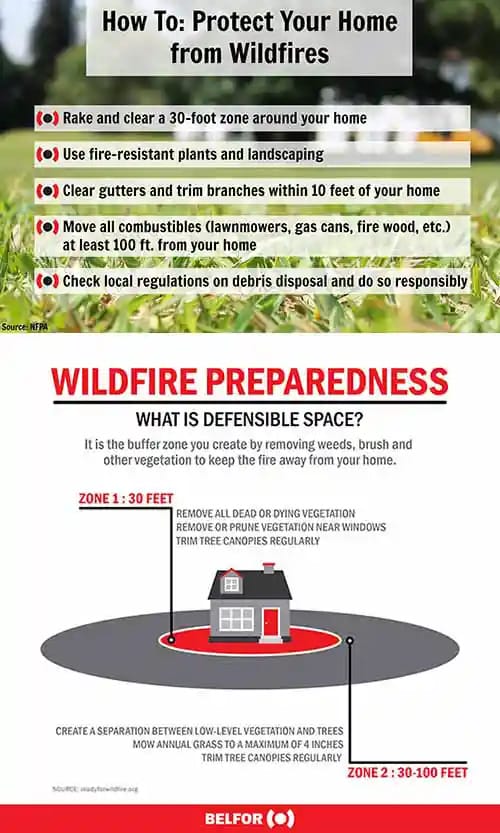
Step 6: Returning Home After a Fire
Wildfire damage can be severe, as it often includes smoke and water damage. Be cautious when re-entering and assessing your property. Only enter a fire-damaged property when emergency services confirm it is safe.
When you do, wear appropriate protective gear such as N95 masks, thick-soled shoes, and protective gloves.
Hidden dangers are easily concealed by fire and smoke damage. Be sure to stay vigilant for broken floorboards, shattered glass, and other hazards.
Turn off your utilities to ensure there is no risk of electric shock or gas leak. Keep electricity off until you are certain there are no exposed wires or damaged appliances that remain plugged in.
If you smell gas, exit your property immediately and call your utility company and emergency personnel.
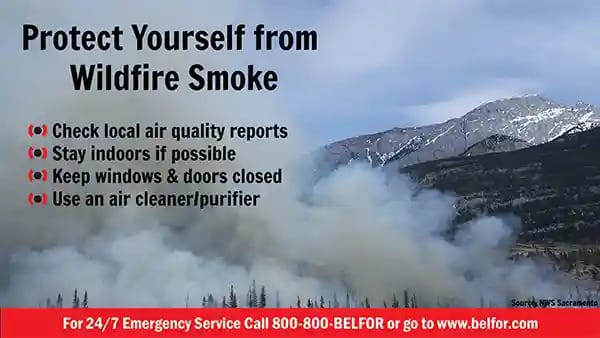
Step 7: Estimate Fire Costs
Once you gain access to your property and assess the damage, contact your fire damage insurance providers. They will send a representative to estimate fire costs.
Hold off on cleaning up until the representative has been on-site, and the insurance company has an accurate idea of the damage sustained.
If you have a home inventory or pre-loss photos of your property, let the adjuster know. This documentation can often help with estimating and settling your claim.
Step 8: Salvage
Always wear protective clothing when salvaging possessions after a fire.
If the damage isn’t extensive, you might be able to handle some of the salvage work yourself. Remove items affected by fire, smoke, or water from the house and place them in well-ventilated areas.
This can help remove the smell of smoke damage. Keep in mind that fire, smoke, and water damage impact different materials in different ways.
Before salvaging any of your possessions, it may be worth talking to your insurance company and/or contents specialists to ensure proper and careful handling of everything.
For any structural or property damage, speak to a professional property restoration service.
.jpg)
